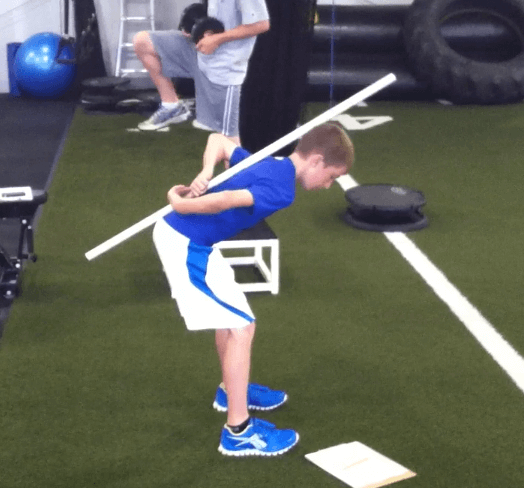Myth: Lifting weights will stunt a child's growth.
Truth: A properly designed and supervised resistance program can be very effective at improving muscular strength, bone density (1) and overall health.
Studies have shown the efficacy and safety of resistance training youth populations for those as young as nine (2). Properly designed and supervised youth resistance programs cause improvements in strength and strength related variables (3).
It is the current position of the National Strength & Conditioning Association (NSCA) that:
- A properly designed and supervised resistance training program is safe for children.
- A properly designed and supervised resistance training program can increase the strength of children.
- A properly designed and supervised resistance training program can help to enhance the motor fitness skills and sports performance of children.
- A properly designed and supervised resistance training program can help to prevent injuries in youth sports and recreational activities.
- A properly designed and supervised resistance training program can help to improve the psychosocial well-being of children.
- A properly designed and supervised resistance training program can enhance the overall health of children.
Does this mean there are no problems or potential issues? Of course there not.
There is the potential for a number of problems, just like in sports children are prone to act spontaneous and out of control of their movements under load, which increases injury risk.
It is critical when designing resistance programs for younger populations that the coach or trainer has a clear understanding of the differences between youth and adults in terms of physical maturation and the impact that has adaptations that can occur. Younger populations generally adapt best to longer duration programs (10-20 weeks) with a higher rep range (6 and up), while lifting submaximal loads. (4).
For us, no matter one's age, it all starts with the quality of movement. I completely agree weightlifting can be harmful to a child. I also agree it can be greatly beneficial. Like most things in life proper application and execution make all the difference.
4 Steps to Proper Application & Execution
Step 1: Build
Build quality movement patterns; don't worry about picking up a barbell, dumbbell, medicine ball or anything else for that matter (If you can't control yourself—good luck controlling an implement that isn't part of you). Children are developing at a crazy rate and for most, have very limited body awareness. This a time to focus on developing movement stability and balance. These six patterns should be the foundation of a solid program. It is critical in the development process that a child has the ability to efficiently and safely perform all of these fundamental movement patterns.
- Squatting
- Hinging
- Lunging
- Single leg stance
- Pushing
- Pulling
Step 2: Refine
Refine these patterns (this is where we really start to work on body awareness and coordination, a critical piece to development during this window of maturation). Be patient, the goal is long-term health and wellness, not show-boating your son, the 10 year old county bench press champion. The training process should revolve around the Long Term Athletic Development Model (LTAD), which dicates that development is indeed long-term.
Now with this said, the rate of physical maturation is not the same across the board from child to child. Therefore, it is critical the person in-charge recognizes what is most appropriate for the youths they are working with.
Step 3: Begin Loading
Now, these well-grooved patterns can start to be loaded. There is no rush to get to the barbell as body weight, bands, dumbbells, medicine balls, and kettelbells all will do the job.
When choosing exercises the goal should be to strengthen movement patterns not muscle groups. Remember, the movements will train the muscles you want worked.
Think variations of planks, lunges, pushups, pull-ups, rows, squats, hinges, step-ups as the staples.
Younger populations generally adapt best to longer duration programs (10-20 weeks) with a higher rep range (6 and up), while lifting submaximal loads.
Step 4: Exercise Patience
Constantly evaluate and assess, making changes as needed, but most of all, be patient. They are kids, and no matter how much you would like them to mature on your watch, they won't. Help them build their coordination, movement skills and confidence while patiently and progressively building strength along the way. If you are patient and follow this model you can be assured they will be more injury resistant and stronger than their peers come adolescence.



